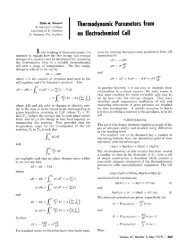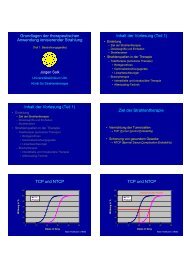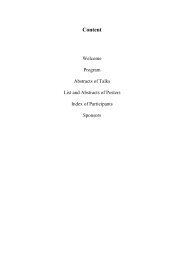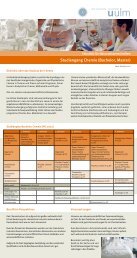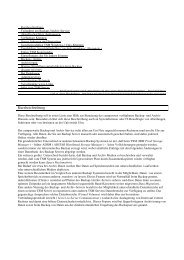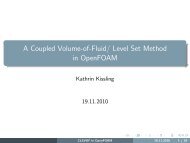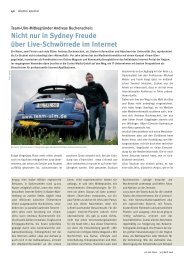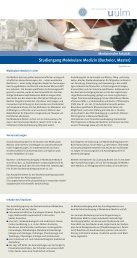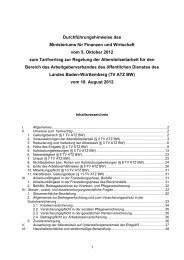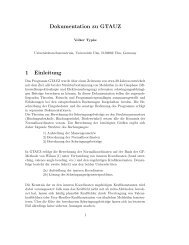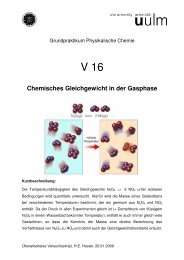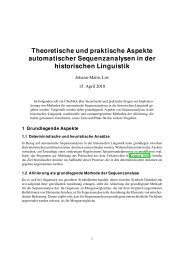Modulhandbuch Master Wirtschaftsphysik - Universität Ulm
Modulhandbuch Master Wirtschaftsphysik - Universität Ulm
Modulhandbuch Master Wirtschaftsphysik - Universität Ulm
Erfolgreiche ePaper selbst erstellen
Machen Sie aus Ihren PDF Publikationen ein blätterbares Flipbook mit unserer einzigartigen Google optimierten e-Paper Software.
• Interest rate models: Term structure modeling, interest rate derivatives, LIBOR<br />
market models<br />
Literatur • Bingham, N. H.; Kiesel, R.: Risk-Neutral Valuation: Pricing and Hedging of<br />
Financial Derivatives. (Springer) 2 edn., 2004.<br />
• Björk, T.: Arbitrage theory in continuous time. (Oxford University Press) 2.edn.<br />
2003.<br />
• Cont, R.; Tankov, P.: Financial Modeling with Jump Processes. Chapman &<br />
Hall, 2004.<br />
• Delbaen, F.; Schachermayer, W.: The Mathematics of Arbitrage, (Springer,<br />
Heidelberg), 2006.<br />
• Hunt; Kennedy: Financial Derivatives in Theory and Praxis, Wiley 2000.<br />
• Karatzas, I.; Shreve, S.: Methods of Mathematical Finance. (Springer) 1998<br />
• Korn, R.; Korn, E.: Option Pricing and Portfolio Optimization. (American<br />
Mathematical Society, Providence), 2001.<br />
• Lamberton, D.; Lapeyre, B.: Introduction to stochastic calculus applied to<br />
finance. Second edition. Chapman & Hall, 2008.<br />
• Musiela, M.; M. Rutkowski: Martingale methods in Financial modelling.<br />
(Springer), 2nd ed. 2004.<br />
• Oksendal, B.: Stochastic Differential Equations. (Springer, Berlin), 5th edn.,<br />
1998<br />
• Shiryaev, A: Essentials of Stochastic Finance. (World Scientific, Singapore),<br />
1999.<br />
• Shreve, S.: Stochastic Calculus for Finance II: Continuous-Time Models.<br />
(Springer, New York). 2004<br />
Lehr- und<br />
Lernformen<br />
• Lecture, 4 hours/week<br />
• Exercise, 2 hours/week<br />
Arbeitsaufwand Präsenzzeit: 84 h; Eigenstudium: Nacharbeitung (64 h), Übungsaufgaben (90 h),<br />
Prüfung und Vorbereitung (32 h); Summe: 270 Stunden<br />
Bewertungsmethode Klausur am Modulende (bei geringer Teilnehmerzahl ist auch eine mündliche<br />
Prüfung möglich).<br />
Notenbildung Die Modulnote fließt gewichtet mit den ECTSPunkten in die Gesamtnote ein.<br />
Benotung aufgrund der Klausur bzw. der mündlichen Prüfung.<br />
Grundlage für Special Courses Financial Mathematics<br />
<strong>Master</strong> <strong>Wirtschaftsphysik</strong> Druckdatum: 06. März 2013 Seite 72 von 170




